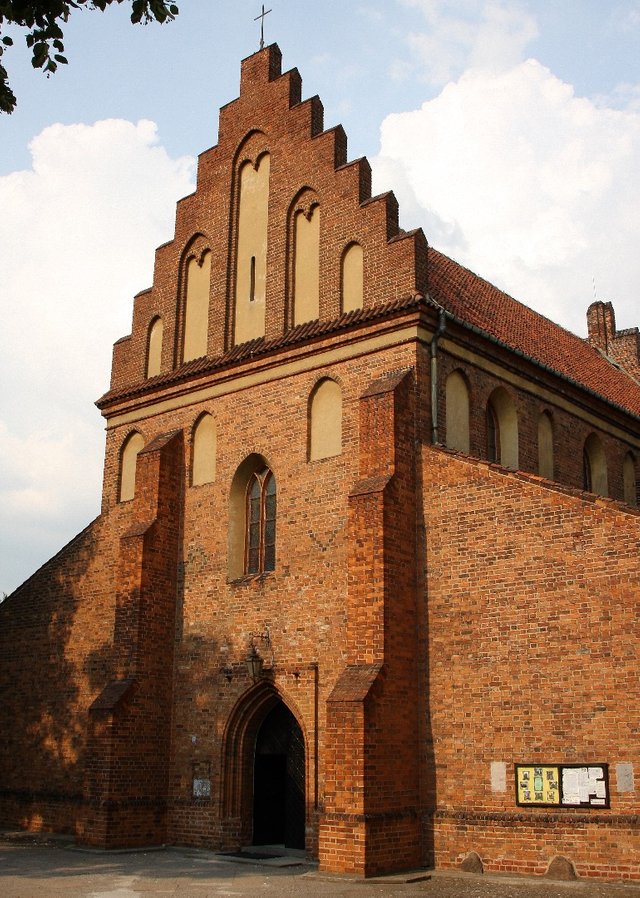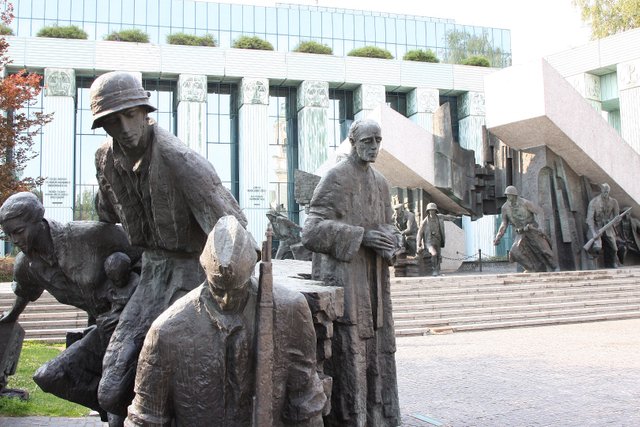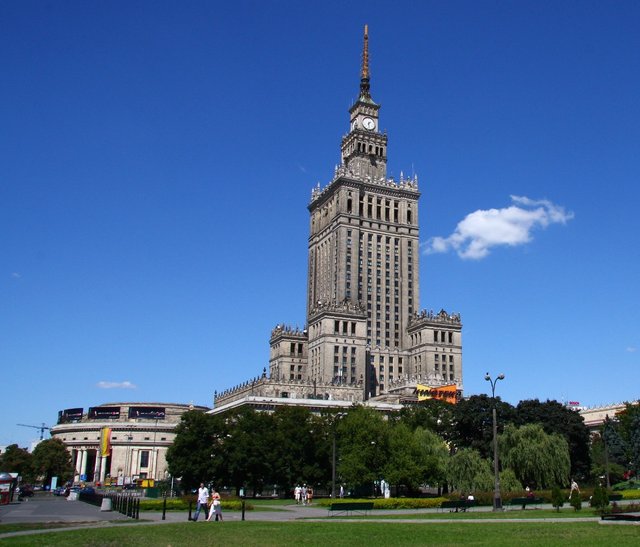From Warsaw with love - Cityguide part 1
Hello everyone! As a licensed city guide in Warsaw, Poland. I would like to introduce you the city where I was born.
History of Warsaw
We don't know the exact date of the founding of Warsaw. Historians guess that it may have been in the 14th century.
Warsaw quickly evolved from a small fishing village in to one of the most important cities of the Mazowsze region. Starting from 1413 it became the chair of the Mazovian Dukes.
In 1526 Warsaw and Mazowsze were incorporated in to the Kingdom of Poland. Ever since then the city rapidly developed. Since the mid 16th century Warsaw was the place, where parliament would meet, and since 1573 it was the place where the nobility would elect the Kings of Poland. The most important date in the city's history is 1596. It was in that year that King Zygmunt III moved the capital from Cracow to Warsaw.

The 17th century brought very rough times to Poland. The country fought with almost every single neighbor, who wanted to také a piece of its large territories. The treasury was empty, and aristocrats were rebelling against the kings. During the Swedish invasion of Poland in the years 1655 – 1660 almost 60 per. of the city was destroyed, and its number of inhabitants shrunk by 50 per.
The 18th century city started to come back to life. More and more foreigners, and Polish aristocrats started moving in to the areas surrounding Warsaw and creatng their own private towns. It is around thes times that the most beautiful palaces of Warsaw were built, and the city finally became the cultural capital of Poland.
The end of this century marked the end of the Polsih state, which was partitioned by three countries – Russia, Prussia and Austria. During the last years of Poland's existence Warsaw was the scene of many important events. This includes the first European Constitution, that in the world was only preceded by the American one. Whereas in 1794 the city was the scene of the first national uprising.
Finally, after the third partition of Poland in 1795 Warsaw became a part of Prussian territory. This occupation didn't last long, as in 1807 Napoleon Bonaparte together with Polish troops entered Warsaw. He created the foundations of a Polish state (Grand Duchy of Warsaw) which capital was to be Warsaw. This independence wasn't long lasted, as in 1812 Russians entered the city after winning a succesful war with France.
In 1815 in accordance with what was accepted at the Viennese Congress, the Kingdom of Poland, that was to be dependent from Russia was founded, and Warsaw was named its capital. It also became one of the Tsars of Russia's seats. These years mark another dynamic development in the cities history. It started to become one of the most modern European cities. The University of Warsaw was founded, and many of the palaces were converted in to offices. The boom ended in 1830 when young cadets from the Warsaw military academy started an anti-Russian uprising (November Uprising). This fight soon became a national struggle, but ended with a defeat of the Polish troops. In effect, the Polish satelite state was dissolved, and Warsaw became a marginal city within the realms of the Russian empire. The next uprising broke out in 1863 and also ended with the defeat of Polish troops.
The development of railway lines at the end of the 19th century put Warsaw back on the maps of important central European cities. It was due to the fact, that here people who would travel east would change trains. In those times many roads, waterworks, hotels, residential buildings and factories were built. Warsaw was getting bigger and attracting more and more people who were looking for jobs.
During World War I the city was occupied by the Germans since 1915, but this occupation wasn't to much of a nuisance to the people of Warsaw. When in 1918 Poland came back to life, Warsaw became not only its political, but also cultural capital.
During the Polish-Bolshevik war of 1919-1920 the Red Army's march was stopped at the city's gates thus protecting Poland and the rest of Europe from a Soviet invasion.
In the 1920's and 1930's Warsaw changed with every single day. It was known as the Paris of the North and was considered to be one of the most beautiful cities in Europe.
Unfortunately World War II turned out to give the city a mortal blow. The Polish army and people of Warsaw defended the city against invading German forces for 20 days during the September campaign of 1939. The invading forces were to strong for the city's defences to withstand any longer, and Poland was attacked from the East by the Soviet Union, thus being surrounded from all sides by enemies. After not receiving physical support, only declarations of support from its allies – France and Britain – Poland surrendered, and many of Warsaw's building were bombed. The German occupation during the years 1939-1944 were the bloodiest years in the history of Europe. Germans would perform mass-executions on residents of Warsaw for such small things such as hiding jews, and send people away to concentration camps. Part of Warsaw was sealed of as a ghetto for Jews, in which they would be exterminated.
Many underground movements operated in Warsaw during the German occupation. They performed some astonishing actions, such as freeing many prisoners in 1943, stealing 100 milion złoty (1943) and successfuly assasinating the head of the SS and Police Franz Kutschera. Of course these are only the most famous armed actions. Almost everyday the streets of occupied Warsaw would see gunfights with the Germans.
When on August 1, 1944, the Soviet army approached Warsaw all of the underground units started the armed uprising against the Germans. The Warsaw Uprising lasted 63 days, and ended with the total demolition of Warsaw.

After 1945 the city was taken over by communists who sentenced to prison many of the soldiers from the underground movements who fought against the Germans. They were falsely accused of collaborating with the occupying forces. The communists started rebuilding the city in the style of many communist cities. Fortunately they didn't succeed in changing the whole city, and thanks to this Warsaw has many architectural styles. Pressure from the poeple of Warsaw, and a change in the mentality of the communist leaders caused, that many palaces and churches in Warsaw were rebuilt. Unfortunately many still have not returned on to the maps of Warsaw.

After the collapse of the Soviet Union and Poland regaining its independence Warsaw has developed. It is now one of the most important cities in Central and Eastern Europe.
Witam kolejnego Polaka!
Taka mała prośba - taga #polish używamy do treści po polsku. W przypadku pisania o Polsce po angielsku preferujemy #poland.
Ok, zmienione. Pozdrawiam!
#socrealism - thats it
Congratulations @jodello! You have completed some achievement on Steemit and have been rewarded with new badge(s) :
Click on any badge to view your own Board of Honnor on SteemitBoard.
For more information about SteemitBoard, click here
If you no longer want to receive notifications, reply to this comment with the word
STOPIf you want to support the SteemitBoard project, your upvote for this notification is welcome!